King
of the airwaves : SLBC's 90-year journey
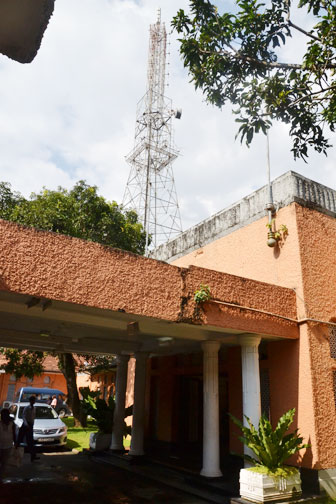 Broadcasting on an experimental basis was started in Sri Lanka, then
Ceylon, by the Telegraph Department in 1923, just three years after the
inauguration of broadcasting in Europe. Gramophone music was broadcast
from a tiny room in the Central Telegraph Office with the aid of a small
transmitter built by the Telegraph Department engineers, with the radio
equipment of a captured German submarine. Broadcasting on an experimental basis was started in Sri Lanka, then
Ceylon, by the Telegraph Department in 1923, just three years after the
inauguration of broadcasting in Europe. Gramophone music was broadcast
from a tiny room in the Central Telegraph Office with the aid of a small
transmitter built by the Telegraph Department engineers, with the radio
equipment of a captured German submarine.
The results proved successful and barely three years later, on
December 16, 1925, a regular broadcasting service came to be instituted.
Edward Harper who came to then Ceylon as Chief Engineer of the
Telegraph Office in 1921, was the first person to actively promote
broadcasting in Ceylon.
|
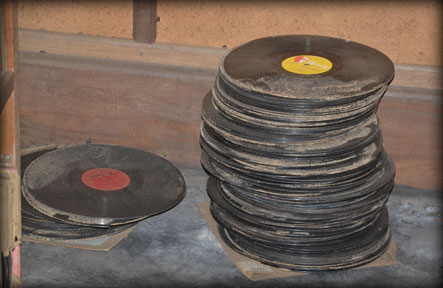
Pix: Vipula Amarasinghe |
He launched the first experimental broadcast as well as founding the
Ceylon Wireless Club together with British and Ceylonese radio
enthusiasts. Edward Harper had been dubbed the 'Father of Broadcasting'
in Ceylon.
The SLBC, to this day, is one of the finest radio stations in the
world. It is also one of the oldest radio stations in South Asia.
Vernon Corea was one of the pioneers of this radio station and he was
deeply proud to be part of the history of Radio Ceylon. He loved the
Station.
King in South Asia
Radio was King in South Asia in the 1950s, 1960s and 1970s and Radio
Ceylon really did rule the airwaves - the station was like no other - it
led the field in South Asia.
People in the Indian sub-continent tuned into Radio Ceylon. The
station was known as a 'market leader' in the field of entertainment.
People wrote to Radio Ceylon from all over the world.
On December 16, 1925, the then British Governor, Sir Hugh Clifford,
inaugurated the broadcasting service - It was first known as Colombo
Radio. The name was changed to Radio Ceylon and the radio station
shifted to Torrington Square on October 5, 1949.
Radio Ceylon broadcaster Gnanam Rathinam in her book 'The Green
Light' (Memories of Broadcasting in Sri Lanka) notes: 'In 1943 the
Broadcasting Station premises was sited in a bungalow named The Bower,
in Cotta Road, Borella (in the city of Colombo).
In early days the programs in all languages were scheduled and
produced by announcers who covered airtime as well. The Colombo radio
station at 'The Bower' ceased broadcasts by midnight on December 31,
1949 and Radio Ceylon came into being on January 1, 1950. On January 5,
1967, it became a State corporation - the Sri Lanka Broadcasting
Corporation. Commercial broadcasting from Radio Ceylon was inaugurated
on September 30, 1950 and Clifford Dodd was seconded for service via the
Colombo Plan.
|
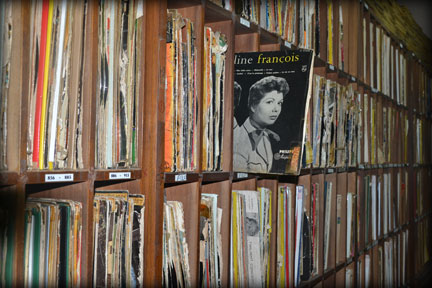
Record Library |
|
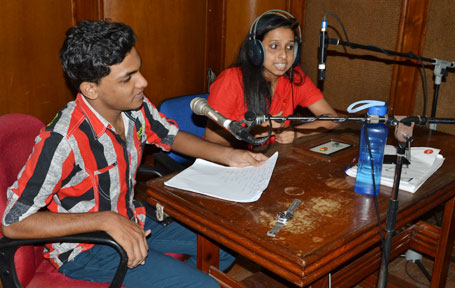
Presenters at the Studio |
|
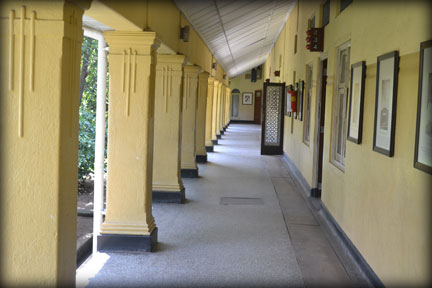
The corridors that saw many a radio stalwart over the years |
Dodd was charismatic and innovative and there was a real 'buzz' in
Radio Ceylon after his arrival.
Australia sent Clifford R. Dodd to Radio Ceylon under the 'Colombo
Plan' and it was a 'ground-breaking' experience, as far as broadcasting
in Ceylon was concerned.
Radio Ceylon grew in popularity and stature. The 'Playback and Fast
Forward Magazine in India noted: 'For millions in this country, Radio
Ceylon was not just a broadcasting station. It had a form and a
personality.
Soon after conquering Mount Everest over half a century ago, Edmund
Hillary and Tenzing Norgay turned on their transistor radio - and lo and
behold the first thing they heard was the All Asia Service (English) of
Radio Ceylon, more than 3,000 kilometres away. They joined millions of
people across the Indian subcontinent who regularly turned in to these
broadcasts.
Greatest broadcasters
A pioneer in broadcasting in Asia, Radio Ceylon for decades informed
and entertained an overseas audience many times the population of
Ceylon, now Sri Lanka'
In this scenario some of the greatest broadcasters in the world come
to mind - Director of the Commercial Service, Clifford R. Dodd, Vernon
Corea had the joined the 'greats' - Livy Wijemanne, Pearl Ondaatje, Tim
Horshington, Greg Roskowski, Jimmy Bharucha, Claude Selveratnam, Mil
Sansoni, Eardley Peiris, Shirley Perera, Bob Harvie, Chris Greet,
Prosper Fernando, Ameen Sayani (of Binaca Geet Mala fame), S.P.
Mylvaganam (the first Tamil Announcer on the Commercial Service), Thevis
Guruge, H.M. Gunasekera, Nihal Bhareti, Leon Belleth, Vijaya Corea,
Myrle Williams, Harold Fernando and Mahes Perera. They blazed a trail in
broadcasting in South Asia.
Veteran broadcaster Nihal Bhareti who counts 50 years in broadcasting
said during his heyday standards were high.
The one-time Director of the SLBC's English Service for ten years
said his career was more than a mere job. It gave him immense
satisfaction and he continues to be held in high esteem by listeners of
all ages.
He recalled that letters and postcards were the only means of
communication at the time to integrate with listeners. It was all fun
and a hobby. Private radio stations were unheard of at the time, he
said. The English Records Library boasts of over 78,000 records at
present. A former broadcaster once remarked that the SLBC has some
records where even the master copies have been destroyed in the UK.
The SLBC has featured some of the finest talents of the nation -
Pandit Amaradeva, H.R. Jothipala, Nanda Malini, Premasiri Khemadasa,
Nimal Mendis, Bill Forbes, (who starred with Cliff Richard in 'Oh Boy'
the television show in London) Cliff Foenander (who went on to sing in
Las Vegas), Desmond Kelly, Mignonne Fernando and the Jetliners, Clarence
Wijewardene, Annesley Malewana, A.E. Manoharan, Desmond de Silva, C.T.
Fernando and a host of artistes became household names through the
airwaves of the SLBC.
The current Director of the English Service, Yusuf Noordeen, said the
SLBC is striving to change with the times. However, it still stands out
as the only radio station compared to the other `music stations.' |


